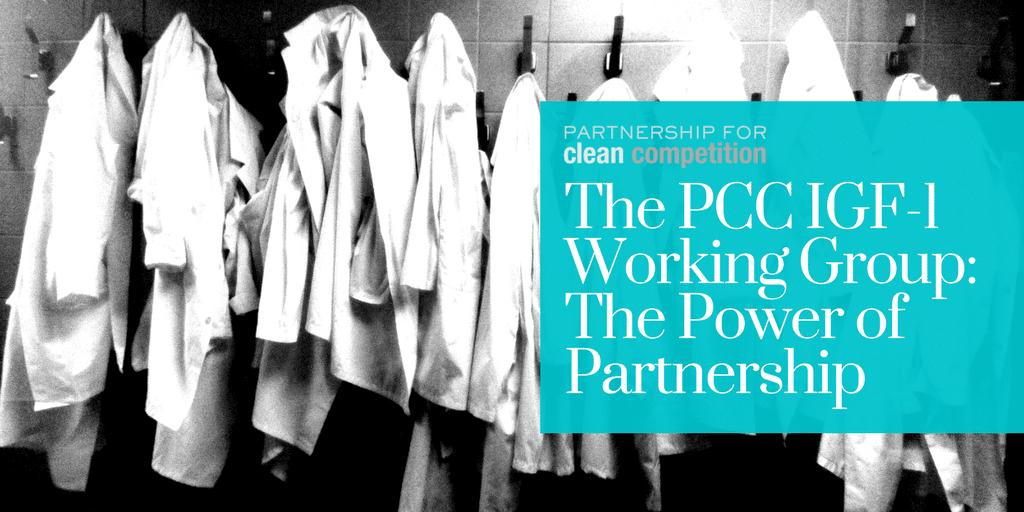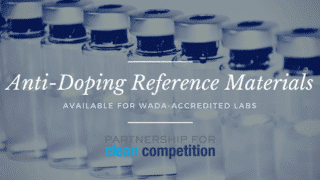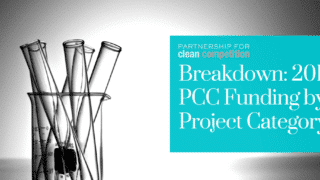In 2012, the PCC assembled a team of researchers representing five distinct laboratories around the world: Dr. David Cowan of King’s College London Drug Control Center, Dr. Andrew Hoofnagle of the University of Washington, Dr. Mario Thevis of the Sport University Cologne, Dr. Daniel Eichner of the Sports Medicine Research and Testing Lab, and Dr. Anthony Butch of the UCLA Olympic Analytical Laboratory. In 2013, Dr. Richard Holt from the University of Southampton was added to the team.
Their goal? To develop a test to precisely and reliably detect growth hormone (GH) abuse in samples analyzed by WADA Accredited and clinical laboratories worldwide. More specifically, the group set out to develop a mass spectrometry method to improve upon a serum based GH biomarkers assay previously approved for the London 2012 Games, as well as improve upon and offer an alternative to the GH isoforms assay already in place at WADA Accredited laboratories for a number of years. If the history of GH detection attempts were any indication, the task would be challenging.
A Brief History
The PCC Working Group was not the first attempt to rid the sporting world of GH abuse. According to Dr. Larry Bowers, USADA’s Chief Science Officer from 2000-2016, a renaissance in GH detection was led by his team via the USADA grant program in 2001, which resulted in a GH isoforms method used at the 2004 Olympic Games in Athens. Knowing yet more work was needed, a USADA / WADA GH Working Group was formed in 2005, with USADA supporting development of a ‘biomarkers’ approach to GH detection, and WADA supporting the isoforms test. Yet, many issues existed with the available immunoassays for GH detection. Finally, in 2011, mass spectrometry techniques became advanced enough to apply the technology to the GH problem, and with Dr. Bowers leading the charge, five laboratories were invited to join the newly formed PCC IGF1 Working Group.
A Renewed Approach
While antidoping scientists were aware a hormone called ‘Insulinlike growth factor 1’ (IGF1) was a well characterized biomarker (or measurable indicator) of growth hormone abuse, researchers had yet to develop a test that could produce standardized results across laboratories. Interlaboratory agreement is integral within the context of the antidoping movement, as the reliability of initiatives such as the Athlete Biological Passport (ABP) rest upon the ability to collect and compare longitudinal data from individual athletes in multiple laboratories.
To be successful, the newly formed PCC IGF1 Working Group would need to both enhance scientific methods of quantification of IGF1 serum and assure interlaboratory agreement across tests. They proved equal to the assignment.
Led by the significant expertise of Dr. Larry Bowers, who helped with idea generation, ensuring equal dissemination of PCC funding, and data summation throughout the project, the group pooled the knowledge of their multidisciplinary backgrounds to address the complex research questions posed by the project.
The Working Group focused their efforts on using Liquid Chromatography tandem Mass Spectrometry (LCMS/MS) to detect IGF1 serum with the knowledge this method was proven to achieve useful limits of quantification in small molecules. After months of combined effort, the team was successful in creating and validating a new IGF1 MS method which made quantification of IGF1 much easier to achieve, while proving instrumental in calculating new decision limits for the GHbiomarkers assay.
The Power of Partnership
While the creation of the new IGF1 MS method was impressive, it was the Working Group’s ability to collect and compare accurate results across labs that was truly unique. Each laboratory used different LCMS/MS equipment during the study, mirroring the reality of fluctuating instrumentation across WADAAccredited labs. Led by Dr. Hoofnagle and Dr. Holly Cox of SMRTL, interlaboratory comparison began.
The team’s ability to work collectively, yet remotely, proved invaluable. Says Dr. Hoofnagle, “This was one of the most collaborative projects I have ever worked on. We were truly ‘developing’ and ‘implementing’ a standard operating procedure that could be launched in any laboratory in the world. It was only one of many projects ongoing in all of our laboratories. We communicated via teleconference (and then by email). There were some experiments that were only done in one or a few labs, but part of what we needed to do was prove that we could do the assay in any lab.”
To showcase the level of collaboration, different labs were responsible for performing different pieces of the project. Dr. Hoofnagle explains, “While they haven’t been published, the group at King’s College (led by Dr. David Cowan) did a lot of important validation studies…while [Dr. Cox] and I led the efforts to perform the interlaboratory comparison study along with performing many of the experiments to identify what the most useful calibrators would be.” In particular, after determining that variation due to instrumentation was minimal, Dr. Hoofnagle and co. assessed variation due to the external calibration of instruments, finding single point calibration to produce the most consistent interlaboratory results. “Our focus on calibration was paramount in getting similar results across laboratories,” he confirms.
According to Dr. Hoofnagle, it was the Working Group’s diligence in discerning the cause of imprecision, not the methodology alone, that contributed so greatly to advancing growth hormone detection: “Truly, the quantification method could have applied to any protein. LCMS/MS […] is an important, novel technology that will help clinical and anti-doping labs in general, but it has been around for a while. The collaborative validation of the assay [across labs] was the most important contributor to success.”
Through consolidating their scientific acumen and diverse resources, the IGF1 Working Group successfully decreased interlaboratory variability for Growth Hormone Detection from 33.5% (as measured by the College of American Pathologists from 2011-2013) to 11.1%, which is below the goal of 15% total allowable error suggested by the Royal College of Pathologists of Australasia.
The test developed by the IGF1 Working Group was instituted in WADA Accredited labs in late 2016.
We congratulate the PCC IGF1 Working Group on providing this advance to the deterrence efforts of all stakeholders of the Clean Sport Movement. For more information, please email jcelmer@cleancompetition.org, or access the published works of the IGF1 working group, including their most recent article in Clinical Chemistry via https://cleancompetition.org/fundedprojects/.




